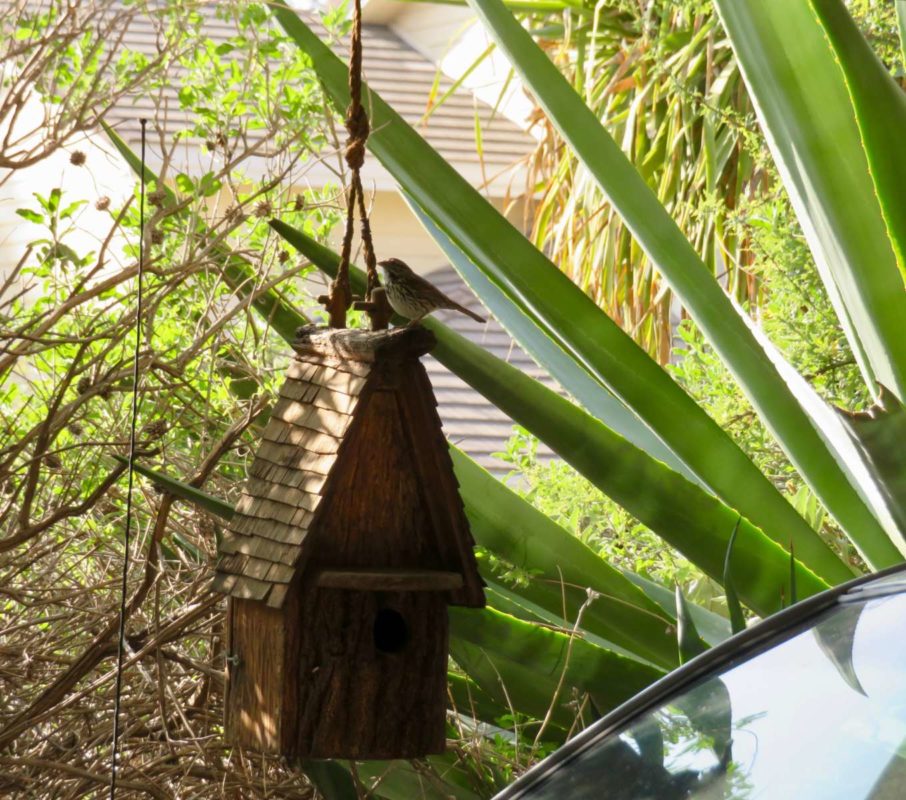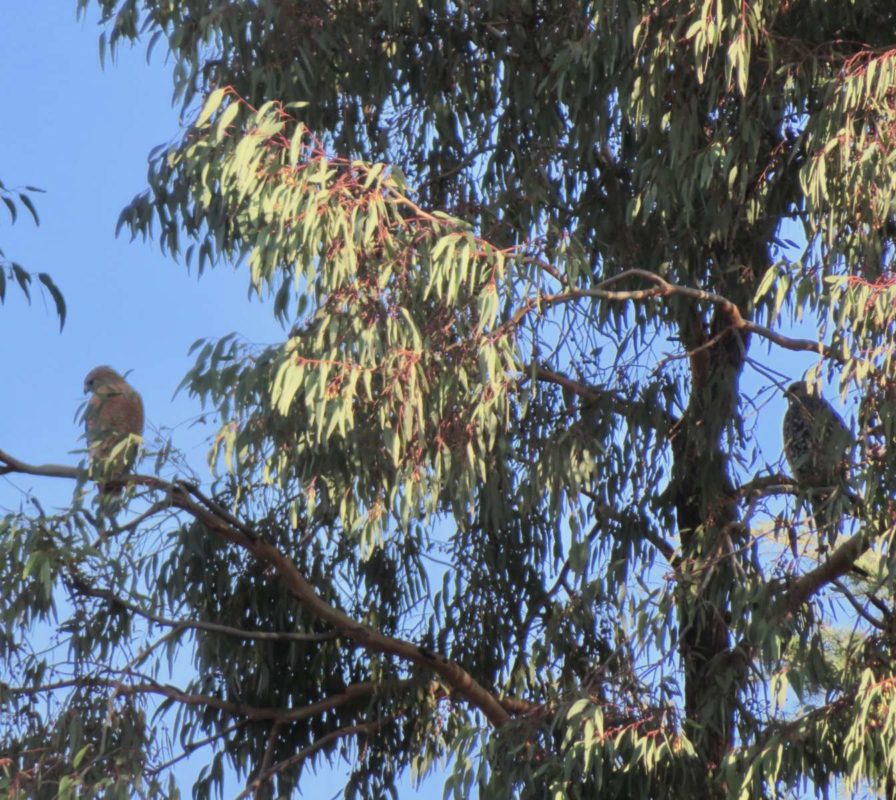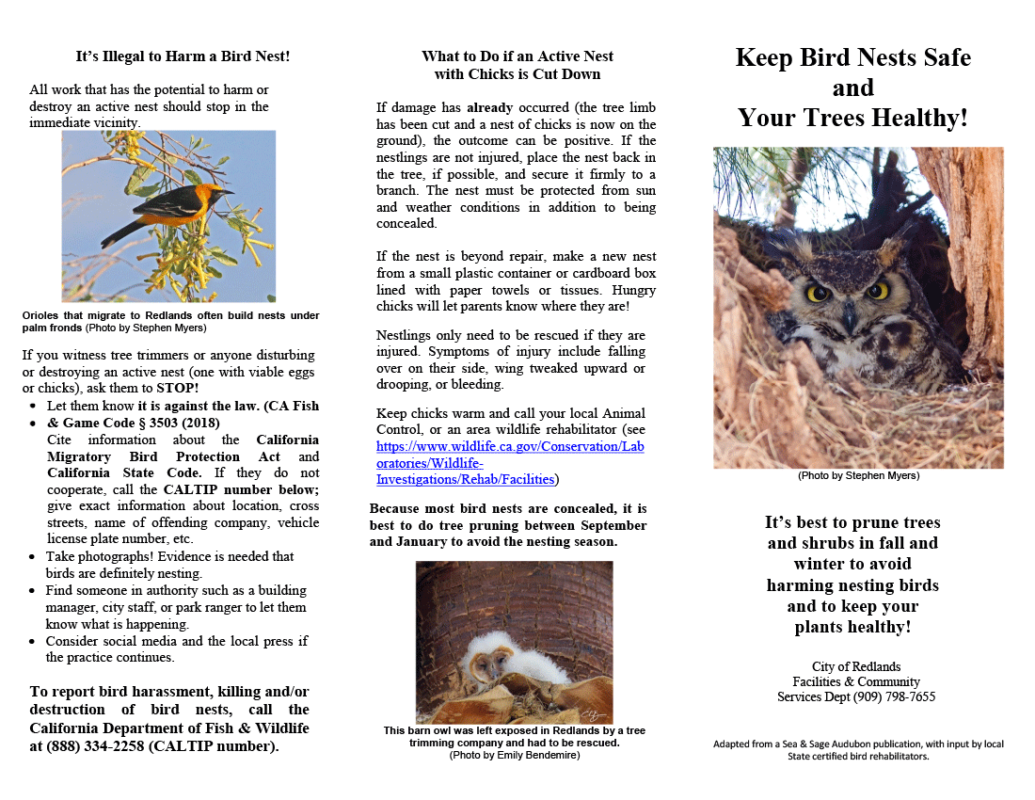After the City of Redlands where I live had reports of nests being deliberately harmed during tree pruning — which I wrote about in When to trim trees and protect nesting wildlife — they agreed that education was needed.
Good news – we now have a brochure available for residents and tree pruners. Here is a brochure for use in our inland area of Southern California — I’m very grateful to our local bird rehabbers who helped identify our local nesting times. And bird photographers Emily Bendemire and Stephen Myers donated beautiful photos (including Emily’s for this post’s featured image).
Download brochure in PDF format (1 MB)
Nesting has begun!
Nesting began early this year. Beginning in December, two Great Horned Owls have been calling nightly to each other, signaling that they’re in breeding mode. The male of one of our local Bewick’s wren couples madly defends its nestbox by attacking our truck’s side mirrors, and a California Scrub-Jay is continually bringing twigs into our 10 feet tall hedge. Meanwhile our next door neighbor found a hummingbird nest blown down from his majestic oak in the recent winds. The male Anna’s hummer we call ‘Sweetie’ still perches on our tree so hopefully the family is trying again.

We finished all our trimming by early February, which is what is recommended to avoid nesting birds. In California this means doing tree and shrub pruning from September through January.
And here is a recent photo of Hawkins, the Red-shouldered hawk we found injured a couple years ago, and was successfully rehabbed to join his mate.

Other Takeaways from the Brochure
- California has two regulations protecting nesting birds, including the California Migratory Bird Protection Act of 2019 after the Trump administration weakened the federal law. Fines can be up to $500,000.
- Most birds camouflage their nests, making it sometimes impossible for tree trimmers to see them. These include migrating hooded orioles which build nests hidden under palm fronds.
- If you witness tree pruning that is disturbing a nest or injuring nestlings, tell them to stop, and call 888-334-2258 (CALTIP) to report. Take photos!
- Other tree pruning tips include ‘don’t over-prune, a common practice.
- If nestlings are uninjured, try to put them back in the nest, or refashion a new one. The parents return nearly always.


awesome article and share … ty
Thanks Ronney, please pass it on! Many people don’t know that we have two regulations protecting birds in CA – some states have none.